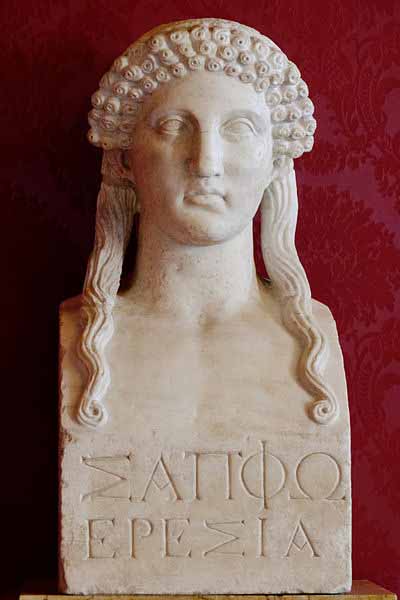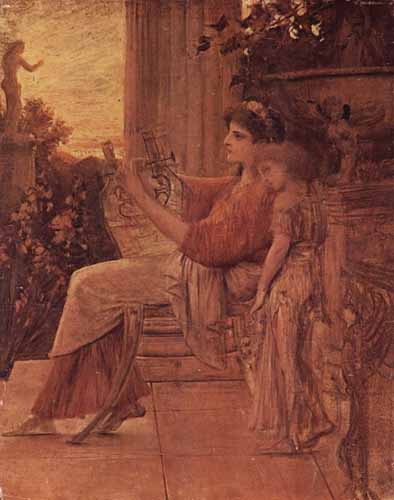



�Sappho was an Ancient Greek lyric poet, born on the island of Lesbos. In history and poetry texts, she is sometimes associated with the city of Mytilene on Lesbos (Carson 2002); she was also said to have been born in Eresos, another city on Lesbos. Her birth was sometime between 630 BC and 612 BC, and it is said that she died around 570 BC. The bulk of her poetry, which was well-known and greatly admired throughout antiquity, has been lost, but her immense reputation has endured through surviving fragments.
Sappho, daughter of Scamander and Cleis, was married (Attic comedy says to a wealthy merchant, but that is apocryphal) and had a daughter also named Cleis. She became very famous in her day for her poetry - so much so that the city of Syracuse built a statue to honor her when she visited. Her family was politically active, which caused Sappho to travel a great deal. She was also noted during her life as the headmistress of a sort of Greek finishing school for girls. Most likely the objects of her poetry were her students.
Sappho had three brothers, married and had at least one daughter, was exiled to Syracuse for political reasons, returned in 581 BC, and died in old age.She was one of the canonical nine lyric poets of archaic Greece. Older critics sometimes alleged that she led an aesthetic movement away from typical themes of gods, to the themes of individual human experiences and emotions, but it is now considered more likely that her work belongs in a long tradition of Lesbian poetry, and is simply among the first to have been recorded in writing.
Some of her love poems were addressed to women. The word lesbian itself is derived from the name of the island of Lesbos from which she came. (Her name is also the origin of its much rarer synonym sapphic).
Because of its eroticism and of the difficulties posed by its dialect, her work was not included in the Byzantine school curriculum. The manuscript tradition therefore broke off, but copies of her work have been discovered in Egyptian papyri of an earlier period.
In ancient and medieval times she was famous for (according to legend) throwing herself off a cliff due to unrequited love for a male sailor named Phaon. This legend dates to Ovid and Lucian in Ancient Rome and certainly is not a Christian overlay.
The 3rd Century philosopher Maximus of Tyre wrote that Sappho was "small and dark" and that her relationships to her female friends were similar to those of Socrates:
A major new literary discovery, the Milan Papyrus, recovered from a dismantled mummy casing and published in 2001, has revealed the high esteem in which the poet Posidippus of Pella, an important composer of epigrams (3rd century BC), held Sappho's 'divine songs'. An English translation of the new epigrams, with notes, is available, as is the original Greek text. Sappho
ANCIENT AND LOST CIVILIZATIONS